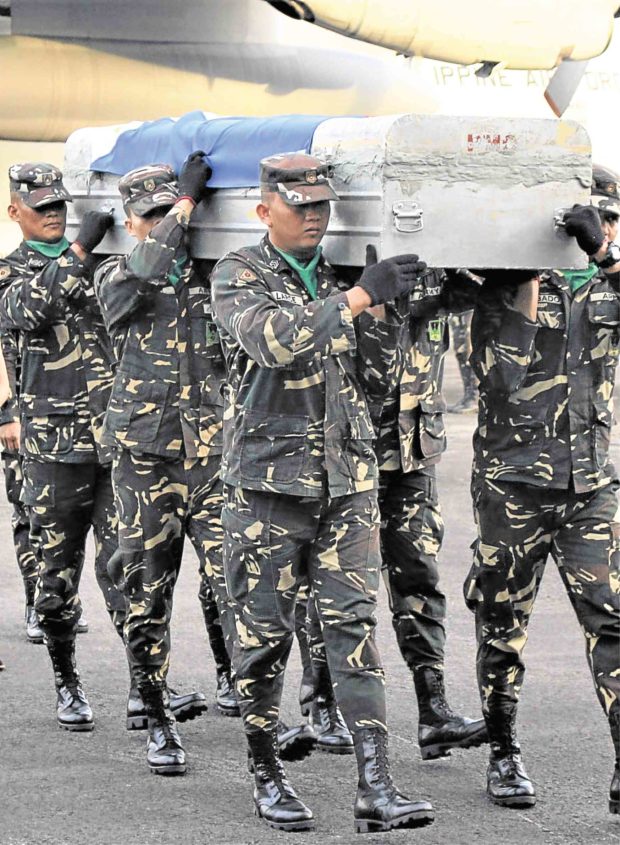Cost of war on IS: P3B

Aside from the human costs of the war on terror in Marawi, the government has already spent P3 billion to prevent Islamic State from establishing a base in the predominantly Muslim city. —GEORGE GIO BRONDIAL
The cost of keeping Marawi City free from the Islamic State (IS) is now P3 billion.
Defense Secretary Delfin Lorenzana told reporters on the sidelines of a forum on the Marawi crisis and martial law at the National Defense College of the Philippines (NDCP) that the Army alone had already spent P1.3 billion in its operations against the Maute Group, a homegrown terror gang that swore fealty to IS.
“I think we have spent P2.5 billion to P3 billion since the beginning,” Lorenzana said.
“Hopefully, we can ask Congress to replenish those funds which were taken from other projects,” he added, estimating the total operational costs incurred by the Army, Navy and Air Force in Marawi.
He told reporters that more funds for equipment, ammunition, night vision goggles and bullet proof vests were needed.
Lorenzana said that based on the assessment of military ground commanders, the Marawi war could continue for another one or two months.
No rush
“But the President said that the military need not hasten the resolution of the conflict because we will lose more soldiers if we hurry it up,” he said.
“Also we do not want those trapped in ground zero to get killed,” he added.
Lorenzana said he planned to ask Congress to raise the budget for the defense department to boost intelligence gathering operations through new equipment, particularly drones with facial recognition capability.
The United States recently donated a Cessna aircraft with ISR (intelligence, surveillance and reconnaissance) capability to the Philippines. It was a “big help,” Lorenzana said.
The Department of Budget and Management had already set aside P20 billion for the rehabilitation of the besieged city.
Budget Secretary Benjamin Diokno said the rehabilitation fund would be released in three tranches until 2019—P5 billion this year, P10 billion in 2018 and P5 billion in 2019.
But Diokno said additional funds could be infused in 2019 depending on the need.
Sources of funds
The additional funds, he said, could come from foreign donors and the budgets of different government agencies, including the Department of Social Welfare and Development, the Department of Public Works and Highways (DPWH) and the Armed Forces of the Philippines.
The rehabilitation fund was set aside following the creation of Task Force Bangon Marawi, spearheaded by the DPWH and tapped to create a master plan to reconstruct Marawi.
Finance Secretary Carlos Dominguez III also raised the possibility of issuing P30 billion-worth of debt securities or “patriotic bonds” to help fund reconstruction efforts in Marawi.
Dominguez tasked national treasurer Rosalia de Leon with studying details of the bonds.
The military said IS followers holed up in Marawi were still alive and in the war zone.
Capt. Jo-ann Petinglay, spokesperson for Joint Task Force Marawi, said brothers Omar and Abdullah Maute and Abu Sayyaf leader Isnilon Hapilon were still leading their men inside the 1-square-kilometer area where the fighting was concentrated.
Hapilon is acknowledged as IS head in Mindanao.
Petinglay said IS leaders and gunmen used tunnels to hide and evade military air strikes.














